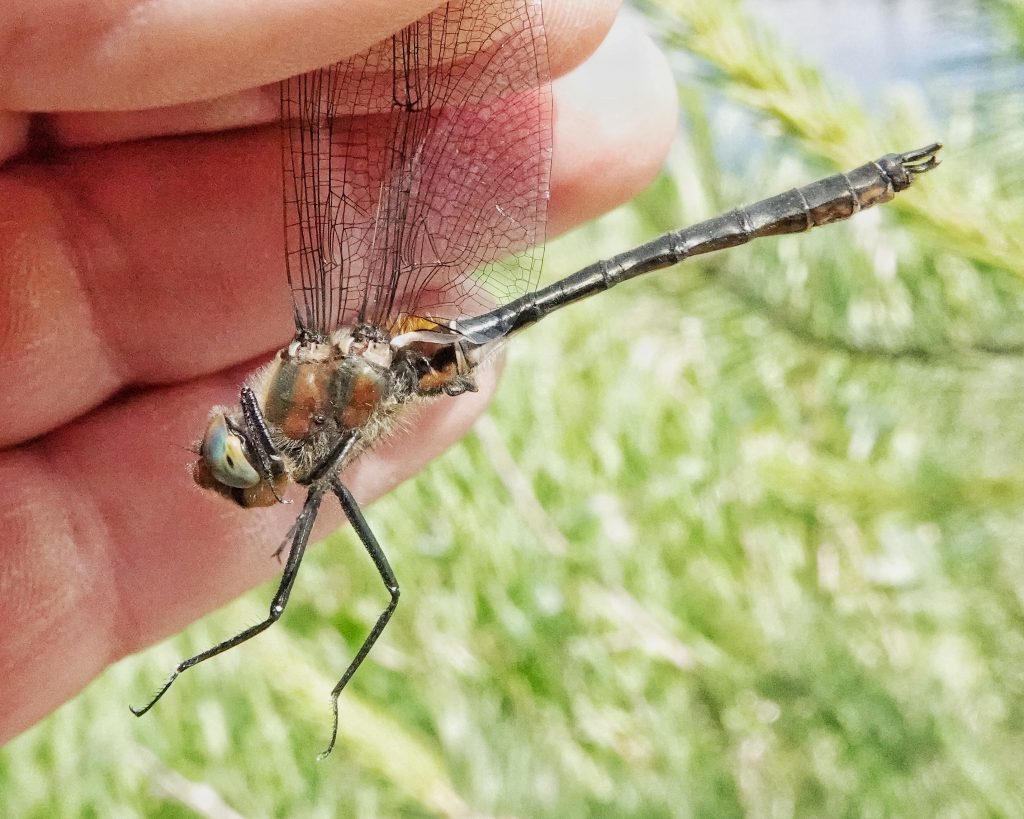
I always enjoy watching American Emeralds patrolling an area, because the bronzy thorax and bright green eyes almost glow in direct sunlight. These handsome members of the family Corduliidae also seem to make a habit of hovering in the air and facing me, often just out of net range, as though they are trying to parse this odd shaped tree that has just appeared on the shoreline. Dennis Paulson talks about them perching on twigs or leaves, and sometime on ground vegetation, but I’ve never had the pleasure of seeing a Cordulia shurtleffii that wasn’t in flight, except for a few that I’ve placed on the tip of a finger after photographing them, like the one in the next photo with wings blurred because he is shivering them in preparation for flight.
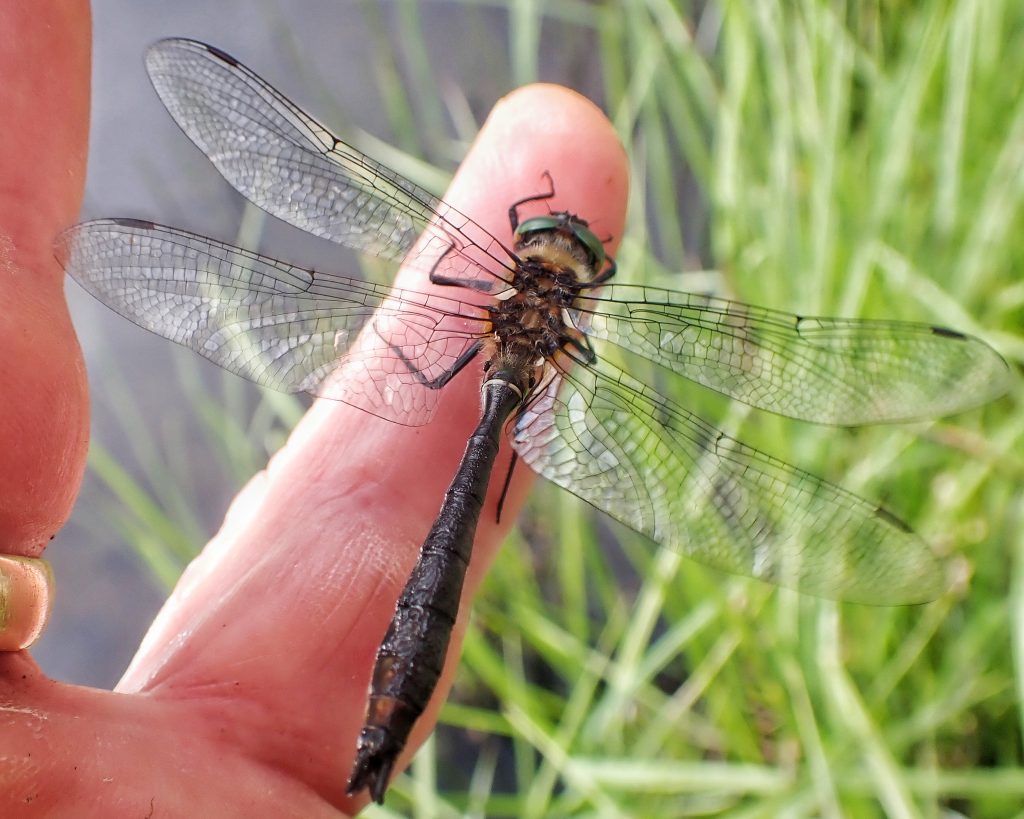
Description– “Average adult size is approximately 1.9 inches; Face is brown below and darker with a green tint on the frons; Bright metallic green eyes; Thorax is brown mixed with metallic green. No yellow side stripe; Dark abdomen with a thin pale ring separating segments 2 and 3; Abdomen widens on segments 5 to 8 making it look slightly clubbed; Cerci curve slightly outward at the end; Epiproct has a pair of upward spikes near the tip; Cross vein in the forewing triangle dividing it in half.” Minnesota Dragonfly entry for American Emerald
Similar species– Only Cordulia sp. in North America; Somatachlora emeralds have white or yellow spots or bars on thorax, and their cerci curve or bend toward each other; Epitheca sp. have brownish yellow marks on thorax and abdomen.
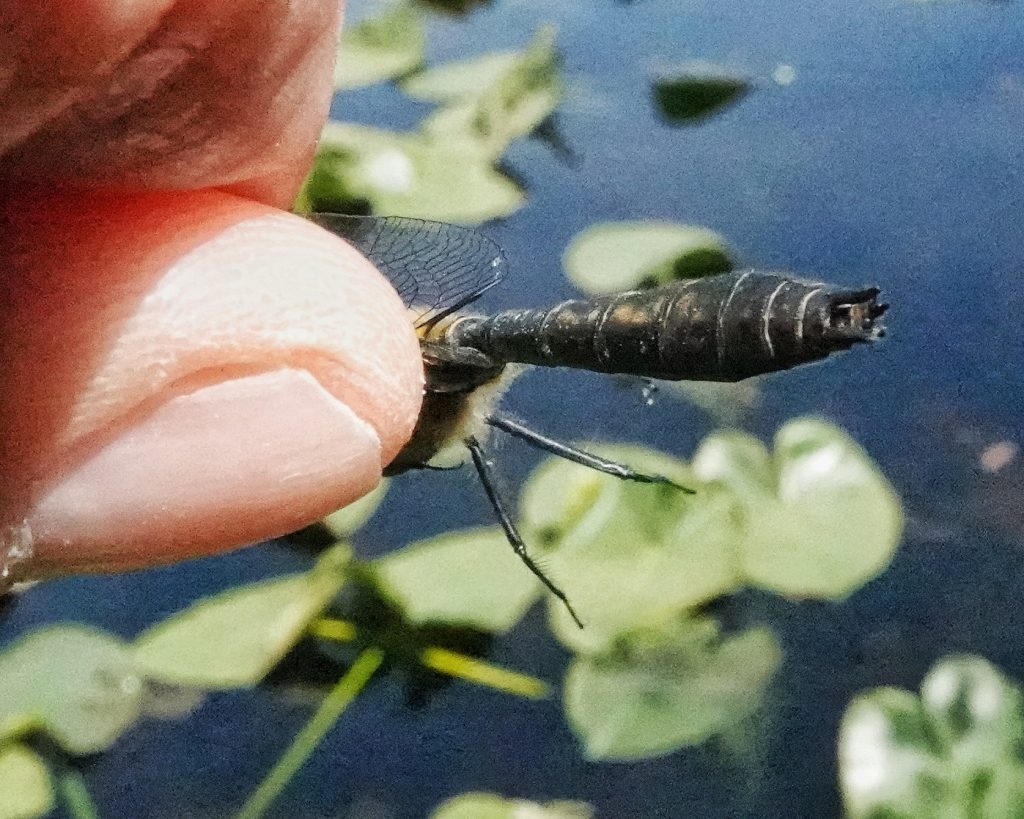
Habitat– Ponds and lakes, mostly in forested areas, and especially in bog lakes and beaver ponds.
Range– Throughout northern North America; more or less region wide in the PNW in appropriate habitat, except absent in se Oregon.
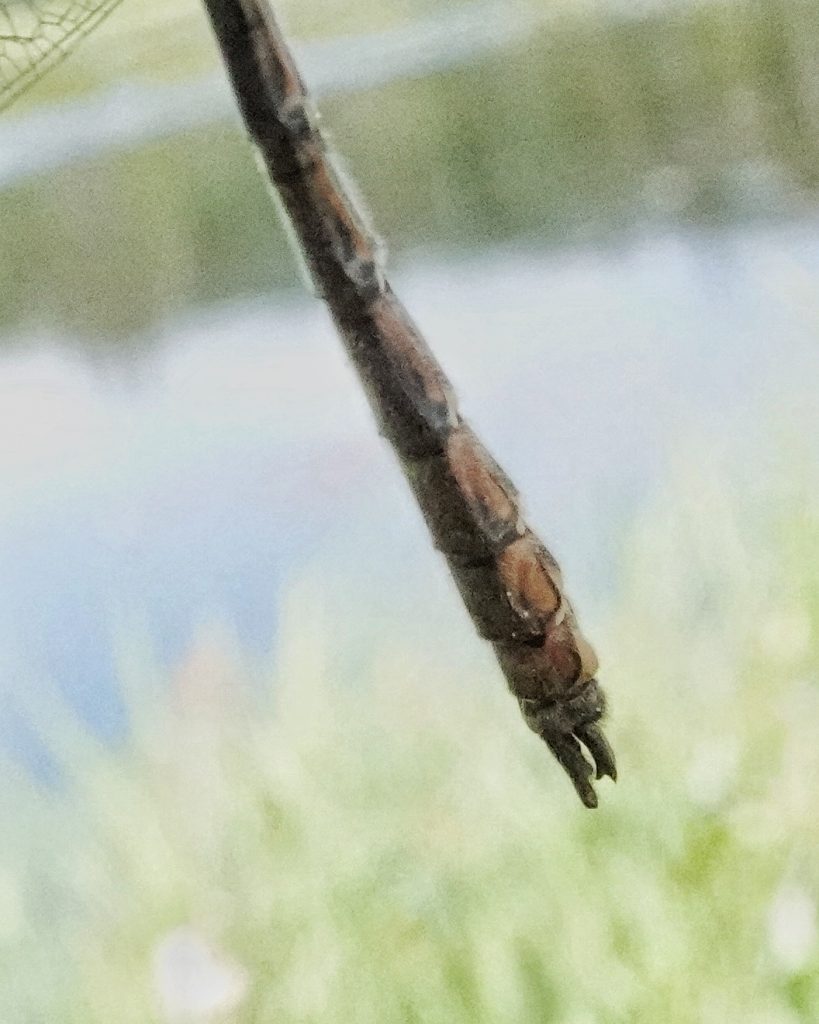
Eats– “Naiad- Naiads feed on a wide variety of aquatic insects, such as mosquito larvae, other aquatic fly larvae, mayfly larvae, and freshwater shrimp. They will also eat small fish and tadpoles; Adult- The dragonfly will eat almost any soft-bodied flying insect including mosquitoes, flies, butterflies, moths, mayflies, and stoneflies.” Idaho State University Digital Atlas entry for American Emerald
Eaten by– Presumably insectivores of all orders
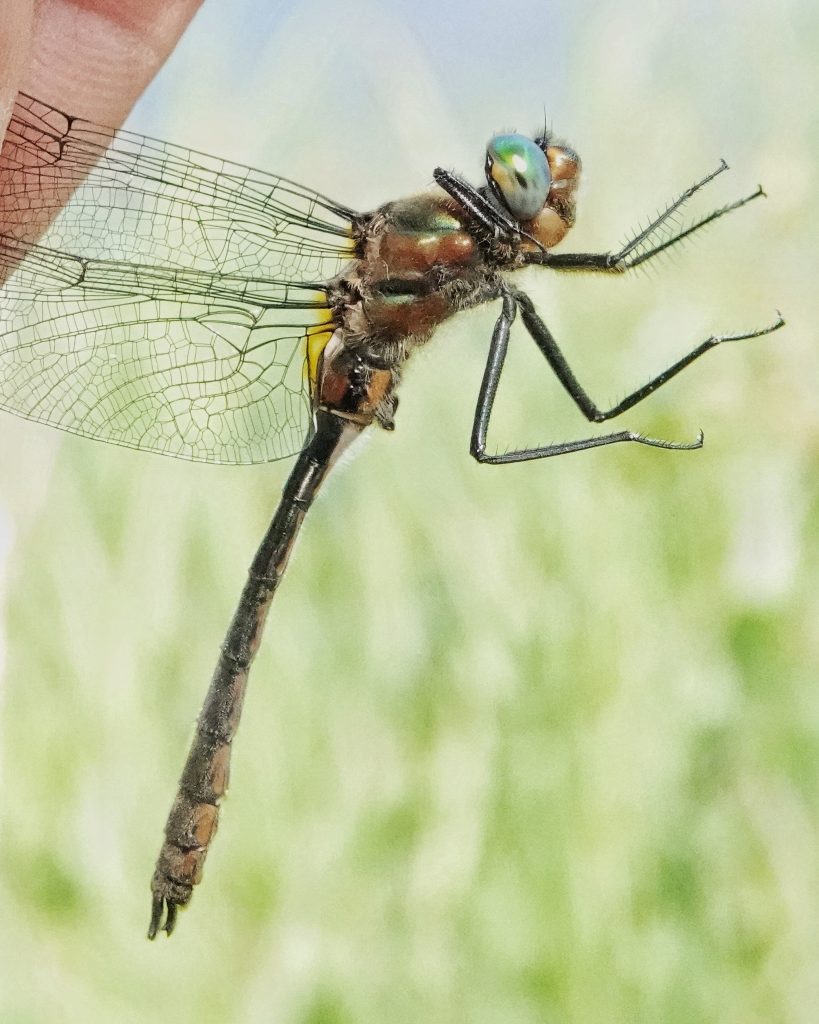
Life cycle– “The naiads live in submerged vegetation and woody debris on the bottom of lakes or bogs, and seem to tolerate very cold water. They do not actively pursue prey but wait for it pass by, a strategy which affords them protection from other predators. Naiads may require several years to mature, and typically emerge as adults at night. It is one of the first dragonfly species to emerge in the spring; Reproduction: Males patrol along the water’s edge searching for receptive females. After males and females mate, the female flies singly, without the male attached, to lay her eggs by dipping the tip of her abdomen on the surface of the water while hovering above it.”Idaho State University Digital Atlas entry for American Emerald
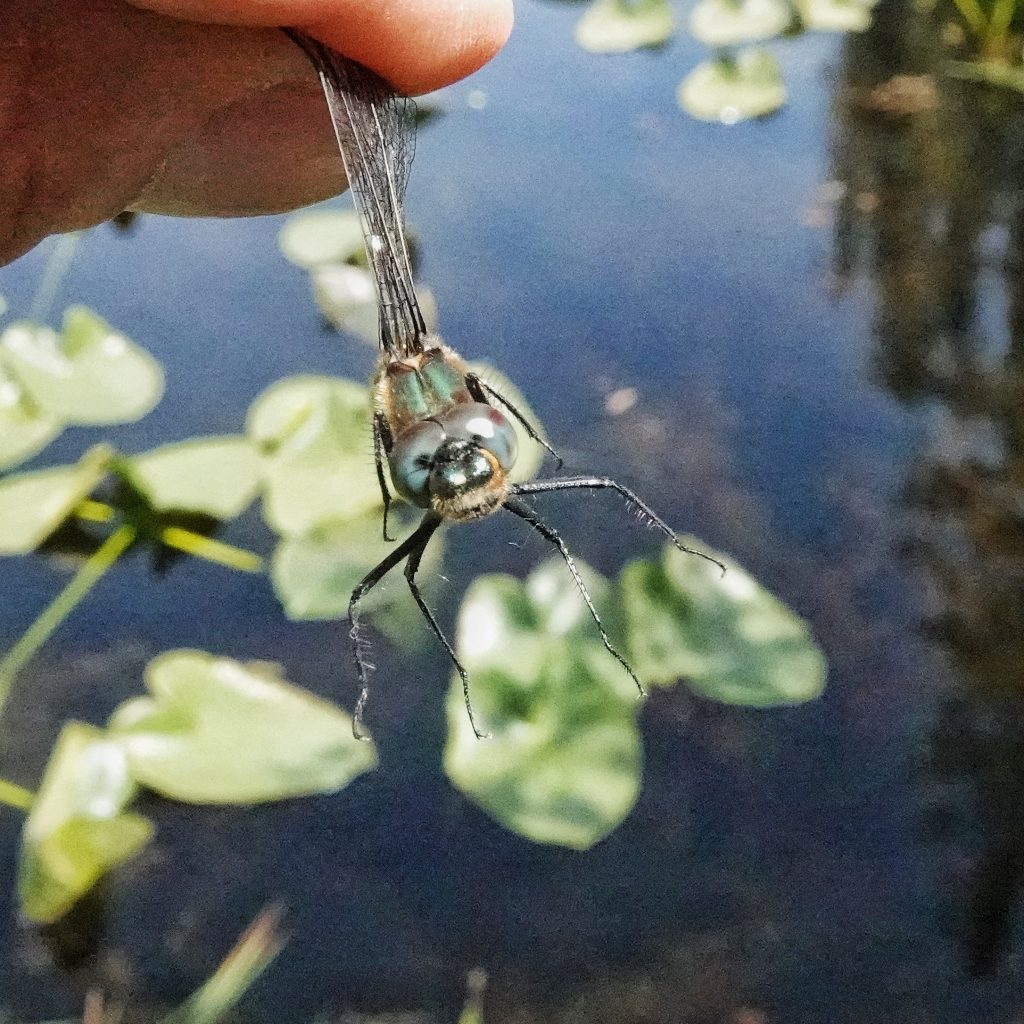
Adults active– April into September, depending on latitude and elevation.
Etymology of names– Cordulia apparently is from the Greek word for cudgel/bump/swelling/tumor/headdress, but I cannot ascertain what exactly it refers to. The specific epithet shurtleffii may well honor a person, since I can find no Greek or Latin words that seem similar, but I can find no reasoning at all behind Scudder’s use of this epithet. ETA- from Kate Redmond, a reader of this profile- “Scudder named it after a young physician named Carleton Atwood Shurtleff (1840 to 1864), a polymath whose interests included botany (native orchids) and entomology (the study of wing venation). Scudder read a paper by Shurtleff posthumously at a meeting of the Boston Society of Natural History and praised his achievements. Shurtleff’s parents had sent his collections and papers to the Society after his death in 1864 “from a disease contracted at the siege of Vicksburg.””
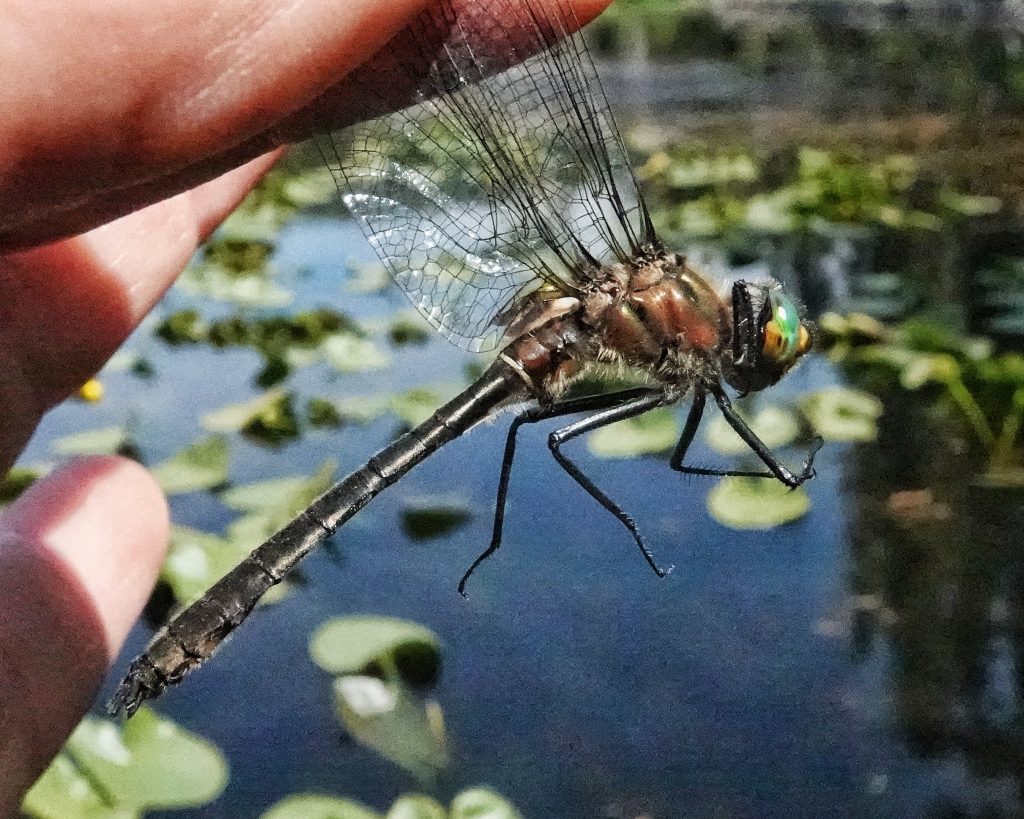
American Emerald (Cordulia shurtleffii)
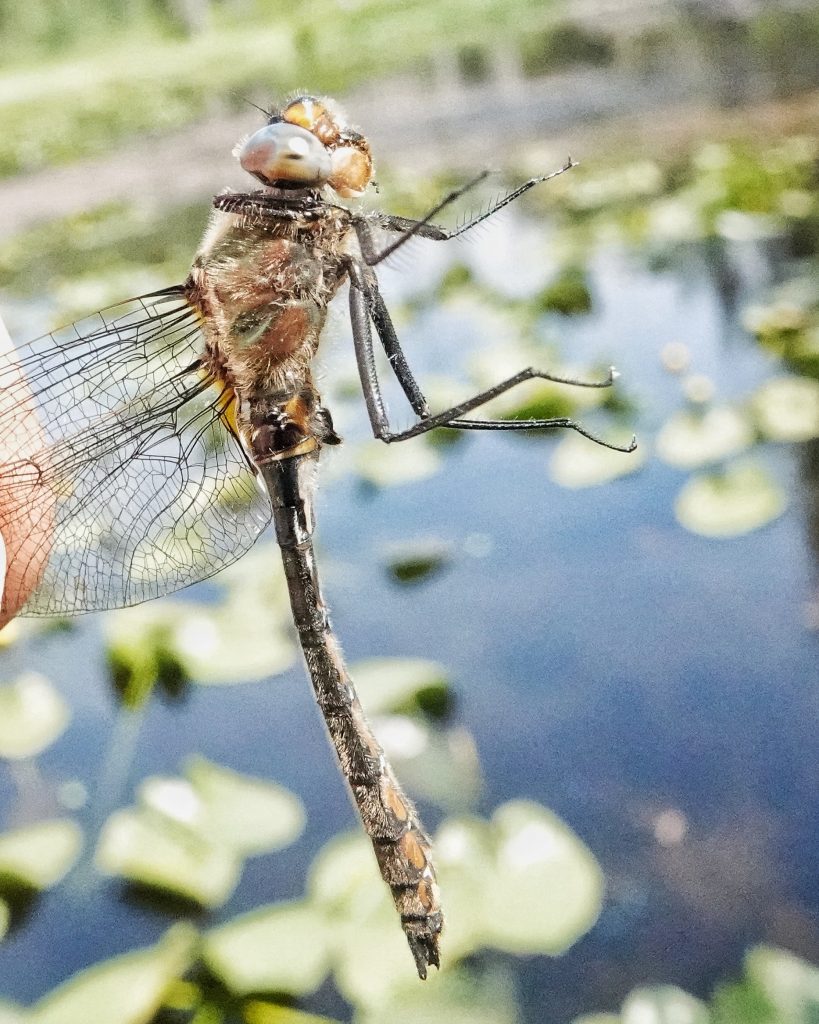
I’m writing a short article about American Emeralds, and I was also curious about their specific name. Here’s what I found out. The species was described by the renowned entomologist Samuel Scudder in 1866. Scudder named it after a young physician named Carleton Atwood Shurtleff (1840 to 1864), a polymath whose interests included botany (native orchids) and entomology (the study of wing venation). Scudder read a paper by Shurtleff posthumously at a meeting of the Boston Society of Natural History and praised his achievements. Shurtleff’s parents had sent his collections and papers to the Society after his death in 1864 “from a disease contracted at the siege of Vicksburg.”
Thank you, Kate! That is great information!